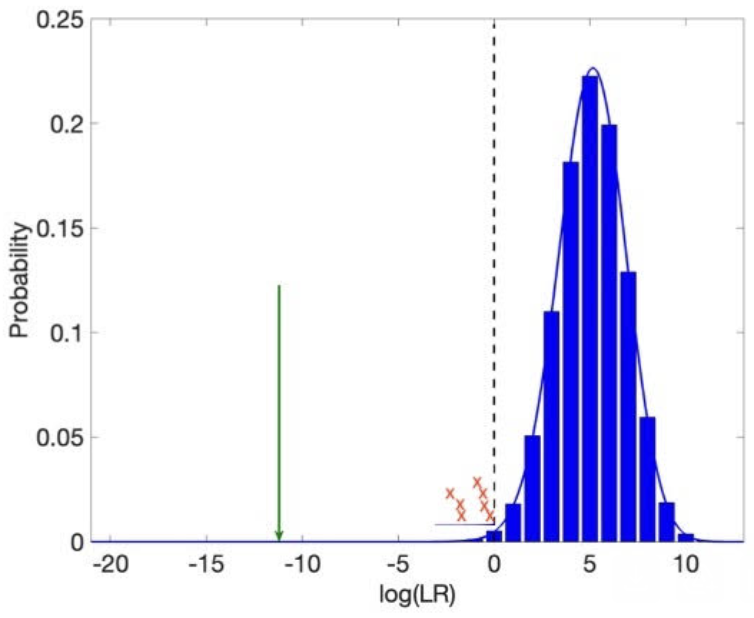Back to Newsroom
10-May-2024
US v. Mills – The government argues against science
Scientists seek truth, advocates argue. In a recent federal case, an assistant US attorney (AUSA) attempted to undermine validated TrueAllele science. His Daubert motion mistakenly claimed that the computer too often excludes criminals. His argument ignored DNA science. A likelihood ratio (LR) match statistic’s magnitude matters, and bigger numbers have lower error rates. The AUSA presented irrelevant weak match statistics from a validation study, discounting the strong exclusionary match statistic in the case.
The following figure from a Cybergenetics MAAFS conference presentation shows the trial lawyer’s error. The x-axis scales DNA match statistics logarithmically; a strong inclusionary LR stat of ten billion is at +10, while a strong exclusionary one over ten billion is at –10. The blue bell curve centered around +5 gives expected inclusionary match statistics for the true person who left his DNA on the firearm. The green arrow shows the defendant’s exclusionary DNA stat of –10, far to the left of the actual perpetrator’s blue bell stats. The AUSA argued that the red cross values near 0 were somehow relevant. The figure shows this was wrong.

Cybergenetics Dr. Mark Perlin prepared a thorough response that fully rebutted the lawyer’s unfounded argument. “The Court denied the government’s motion to preclude the evidence,” finding TrueAllele to be admissible under the Daubert reliability standard. “The Court exercised its discretion not to hold an evidentiary hearing.” The science was clear.
